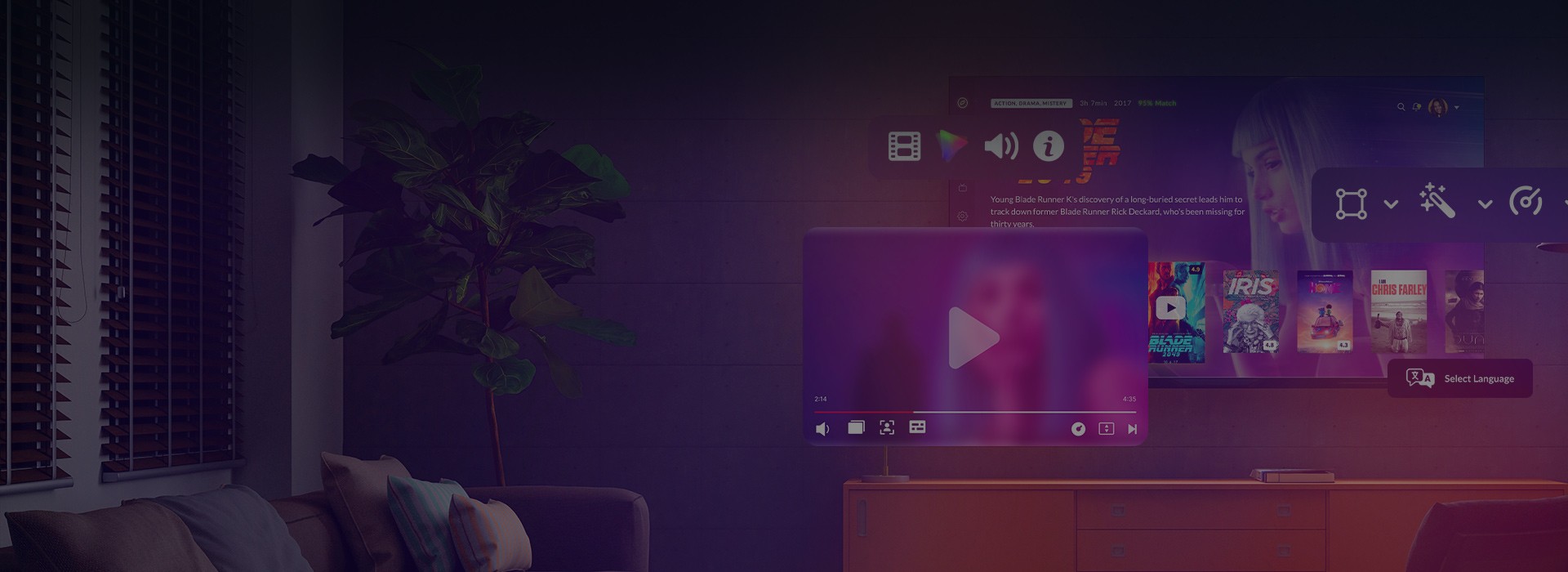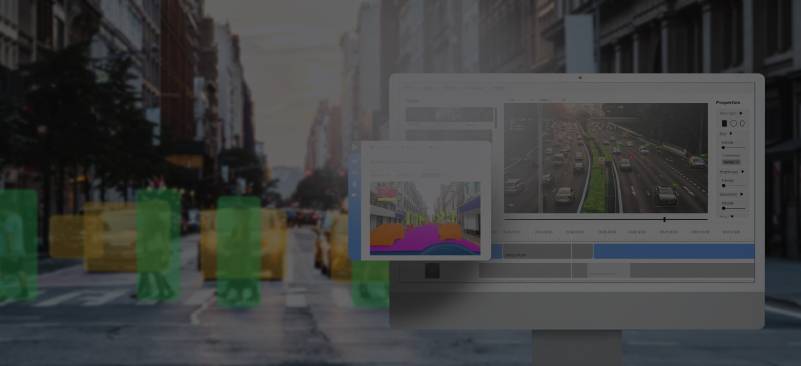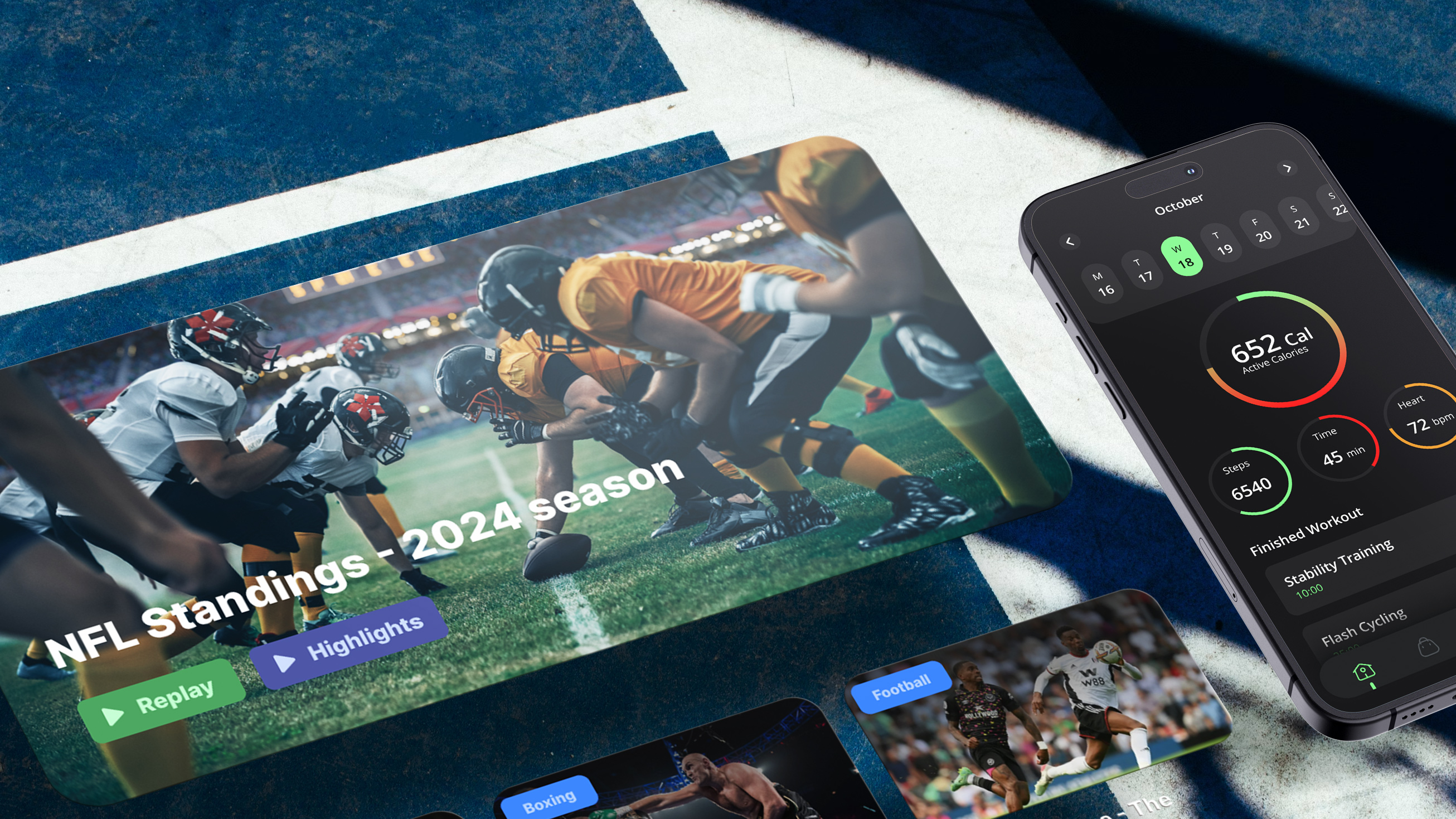How many channels do you actually watch versus how many sit unseen and unloved in your subscription lineup? Chances are, the disparity is staggering. And if you’re distributing content, your viewers have totally been there too — the channel chaos leaves a legion of neglected ones gathering digital dust.
So today, we’re teaming up with Alexey Zaberezhniy, Systems Analyst and Video Solutions Expert at Oxagile, to explore the Electronic Program Guide (EPG) — a tool for helping viewers slice through the endless content mess and figure out what’s worth their precious screen time.
Why EPGs are the secret weapon for content providers and distributors
Once upon a time, television offered a modest dozen channels, easily summarized in a slim weekly pamphlet. Today, the lineup of channels and their weekly content more closely resemble a thick book rather than a simple guide.
However, a 2016 Nielsen report found that American adults typically engage with just 9.6% of the channels they have access to — a disparity that has only grown in the intervening years.
This happens because as viewers start browsing through channel lineups and explore the content there, they gradually curate a list of favorite channels — rarely venturing beyond this personalized selection, which typically narrows down to just 7-10 channels out of hundreds available.
Digital platforms, however, can transform this dynamic. With intuitive interfaces, instant channel switching, and, naturally, smart EPGs viewers can comfortably expand their “favorites” to 20-25 channels they regularly flip through.
This surge in viewing options naturally drives up screen time — and there’s a clear ripple effect. The more time people spend watching, the more likely they are to renew their subscriptions the following month. After all, if you’re consuming hours of content, the subscription feels justified.
For distributors, this means one thing: if some channel offers content that might interest a viewer, the EPG must be designed to ensure they don’t miss it.
What makes viewers love EPGs?

Over 90% of digital TV subscribers utilize an electronic program guide to navigate programming. Why? It boils down to a blend of intuitive design, smooth performance, responsiveness, and thoughtful features that make browsing a breeze:
- Rich program details
A great EPG doesn’t just list titles — it dishes out extras like genre, cast, release year, or rating to help viewers pick wisely. Even better, a quick preview pane or expandable listing with a synopsis and thumbnail lets them dig deeper without jumping screens. This cuts down on aimless flipping and hooks them with spot-on content right away.
- Smart search
Modern EPGs shine with search bars for hunting down shows or channels by name, plus filters for genres, ratings, or personal faves. A “favorites” option or genre tweak turns the guide into a tailored fit for each viewer’s taste.
- Personal touches
Algorithms can spotlight recommendations or “Featured” picks based on watching habits, making the guide feel custom-made. Letting users shuffle channel order or save go-to stations adds a comfy, personal vibe.
- Integration of DVR, catch-up services, and interactive features
For instance, a “Record” button for future shows, play icons for on-demand content, and subtle reminders/alerts ensure users never miss their favorite programs. Interactive options — such as adding shows to watchlists, rating content for personalized recommendations, or participating in live events (e.g., voting) — are designed to boost engagement while maintaining a clean interface.
Building blocks of a perfect EPG
The format
The hallmark of an exceptional EPG lies in its ability to present abundant information swiftly and unobtrusively. A design that demands excessive navigation for details frustrates users, while overloading single-screen risks creating a cluttered, confusing display. The sweet spot delivers a comprehensive snapshot — current broadcasts, past programs, and upcoming offerings — while maintaining clarity and ease of use.
Modern EPGs often incorporate features like catch-up TV and archives, allowing access to content beyond the live moment. A program scheduled two hours from now can be viewed immediately, blending timelines into a fluid, user-friendly experience. This adaptability has shaped contemporary EPG design, with 90% adhering to a familiar grid: channels stacked vertically, programs aligned horizontally along a timeline — past to the left, future to the right.
Adaptability for different devices

Screen sizes vary widely, from Smart TVs to mobile apps, necessitating thoughtful adjustments. Font sizes, screen resolutions, and readability matter. You can’t squeeze in, say, more than eight rows on a small screen without it turning into a blurry mess. Here, smart design steps in. Imagine a streamlined list of eight channel names. Select one, and it expands within the same view — font size grows, details emerge — without whisking users elsewhere. Navigation remains brisk, with preloaded content ensuring smooth transitions. The expanded channel reveals more, yet the surrounding context — above and below — stays visible, anchoring users as they explore.
Advanced filtering
One major improvement in modern EPGs is content-based filtering. Traditional filtering only categorizes channels by type (movies, news, sports, kids’ content). However, like in one of our projects, it can be taken further by developing content-specific filtering, allowing viewers to search for specific events across multiple channels and shrink your 100-channel lineup to 10 manageable options.
For example, instead of just filtering “sports channels,” viewers can filter for “football” and instantly see all channels broadcasting football matches. This matters because sometimes a general channel — say, a federal broadcaster not dedicated to sports — might air a football match as well. And with a football filter, it pops up alongside the usual suspects.
Such content-based filtering solves a critical challenge for both audiences and providers. Take super-niche channels, for example dedicated to butterflies. It might struggle to attract even a dozen dedicated viewers. Running such channels is expensive, and their narrow focus makes them hard to monetize. To stay viable, many broaden their scope — a butterfly channel might add gardening or ecology content to appeal to a wider crowd. This is where smart filtering shines. Someone watching a gardening show might get recommendations for that butterfly channel’s expanded content — creating unexpected connections.
Besides, almost every system now leans on extra tools like “Favorites” lists, where you can stash your go-to channels. It simply mirrors the main EPG layout — just leaner, with no distractions and with a tidy, focused view of what matters to them.
Real-life implementation: AI-powered EPG

Background
Our team was entrusted with creating an Electronic Program Guide that prioritized speed, simplicity, and compatibility with low-end devices, such as TVs with constrained hardware. The goal was to deliver a seamless, native-like experience that felt intuitive while incorporating bold, legible UI elements suited for TV screens, which are often viewed from a distance. We aimed to keep the interface uncluttered and ensure smooth transitions — like fading or sliding effects — enhanced usability without overburdening the system.
The result
Layered, step-by-step content filtering system (resembling flipping through chapters or sections in a book) organizes content selection in a clear, left-to-right progression, guiding users through a straightforward decision-making path. In just 2-3 steps, users arrive at a concise, tailored list of programs. It works this way: starting with a broad category on the left sidebar, users make a selection, triggering dynamic sub-menus that refine the options. For instance, they select “Sports”, then choose “Football”, and then pick “Champions League”. As a result, they get a focused list of live or upcoming Champions League matches.
This method keeps the interface tidy, with the filter occupying minimal space, allowing a spacious, organized grid of program listings to dominate the right side.
Paired with the “Book” structure, we implemented a clean grid layout on the right to showcase filtered content, such as live broadcasts or scheduled programs. This minimalist design ensured rapid load times and effortless navigation, even on less powerful devices. Subtle animations — like sliding menus or pop-up sub-filters — were carefully integrated to elevate the experience without compromising performance.

Key innovations
- Performance optimization: Drawing on our video development experience and deep knowledge of various low-end TVs hardware, we crafted an EPG for quick loading, minimizing strain on limited resources.
- Intuitive navigation: The left-to-right filtering mirrored a natural thought process, easing the mental effort required from users. Dynamic sub-menus appeared seamlessly after each choice, maintaining a lively and responsive feel.
- Adaptable design: Oversized UI elements catered to TV viewing distances, while the efficient codebase ensured broad device compatibility.
- AI-driven recommendations: By leveraging metadata from each film or content unit, we integrated AI-based recommendations, offering users personalized suggestions to enhance their experience.
- Background EPG browsing: The EPG can be seamlessly layered over video content as an immersive overlay, allowing viewers to explore other programming options without disconnecting from what they’re watching. The design balances readability with subtlety, using high-contrast text and a semi-transparent panel to ensure clarity without disrupting the viewing experience.
How is the EPG grid generated?
In the past, individual TV channels or smaller broadcasters independently created their own program schedules. These schedules were then distributed to TV operators. Operators manually compiled schedules from dozens of sources into a unified guide for viewers. This fragmented, labor-intensive system persisted for years.
Over time, specialized aggregators emerged as dominant players. They started consolidating programming data from 100–300 channels per region, going beyond basic listings, offering rich metadata such as film-actor cross-references, detailed content descriptions, and interconnected media libraries.
Today, most broadcasters and platforms depend on third-party aggregators to supply standardized data for building EPGs. This process is largely handled on the backend: aggregators deliver structured data and metadata, which the operator then maps to their own channel lineup. Companies like Oxagile help integrate these data feeds into custom platforms, ensuring the metadata fits smoothly with the client’s EPG design and technical setup.
The future of EPGs
Over the past five years, IPTV and OTT services have witnessed a notable surge in EPG usage, with an approximate 30% increase reported. Platforms offering live channels, such as live TV streaming services and free ad-supported TV apps, highlight that viewers aren’t just relying on on-demand menus — they’re actively engaging with the guide features to navigate their options.
Yet, while EPGs remain a cornerstone of content exploration, they’re no longer the sole gateway. Streaming audiences are increasingly turning to tools like tailored recommendations, search functions, and curated carousels to uncover new shows. And although EPGs retain their importance, they now coexist with a broader ecosystem of discovery methods. A viewer might flip through the guide one moment and lean on a streaming app’s algorithm-crafted homepage the next.
Looking ahead, the evolution of EPGs hinges on their ability to adapt to these changing tides. The next wave will likely prioritize seamless integration with smarter, AI-powered recommendations, synchronized access across devices, and deeply personalized experiences. The vision is clear: a future where viewers no longer hunt for what to watch — instead, the perfect content effortlessly finds them.
Make every channel count
Whether you’re starting from scratch or upgrading your current setup, we know how to build an EPG that gets viewers watching more channels, sticking around longer, and actually enjoying the scroll.



























